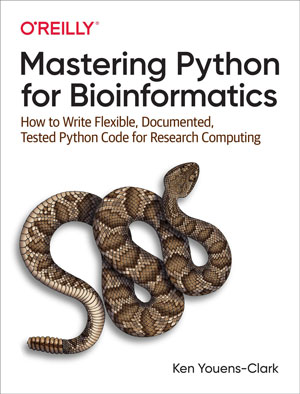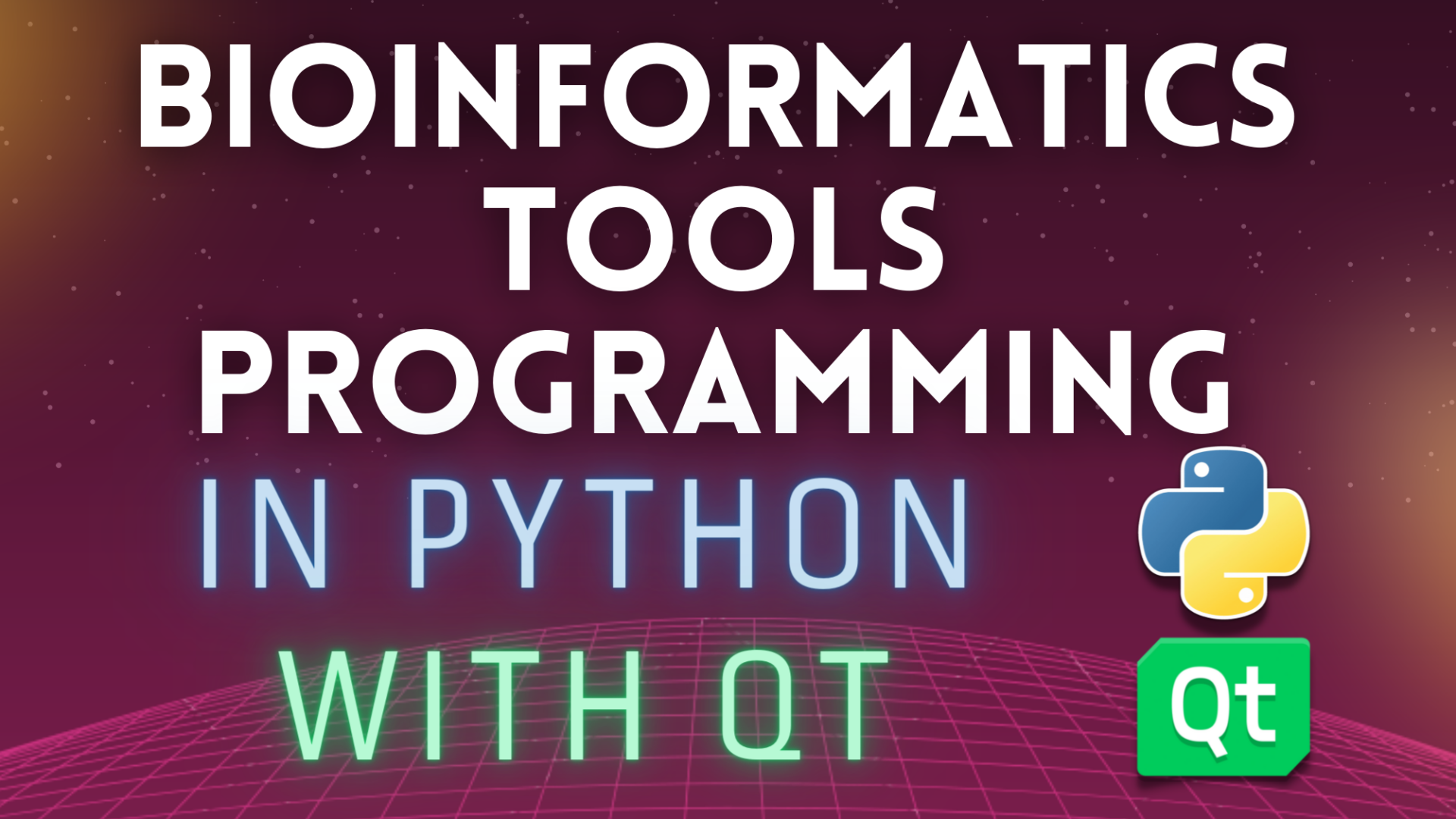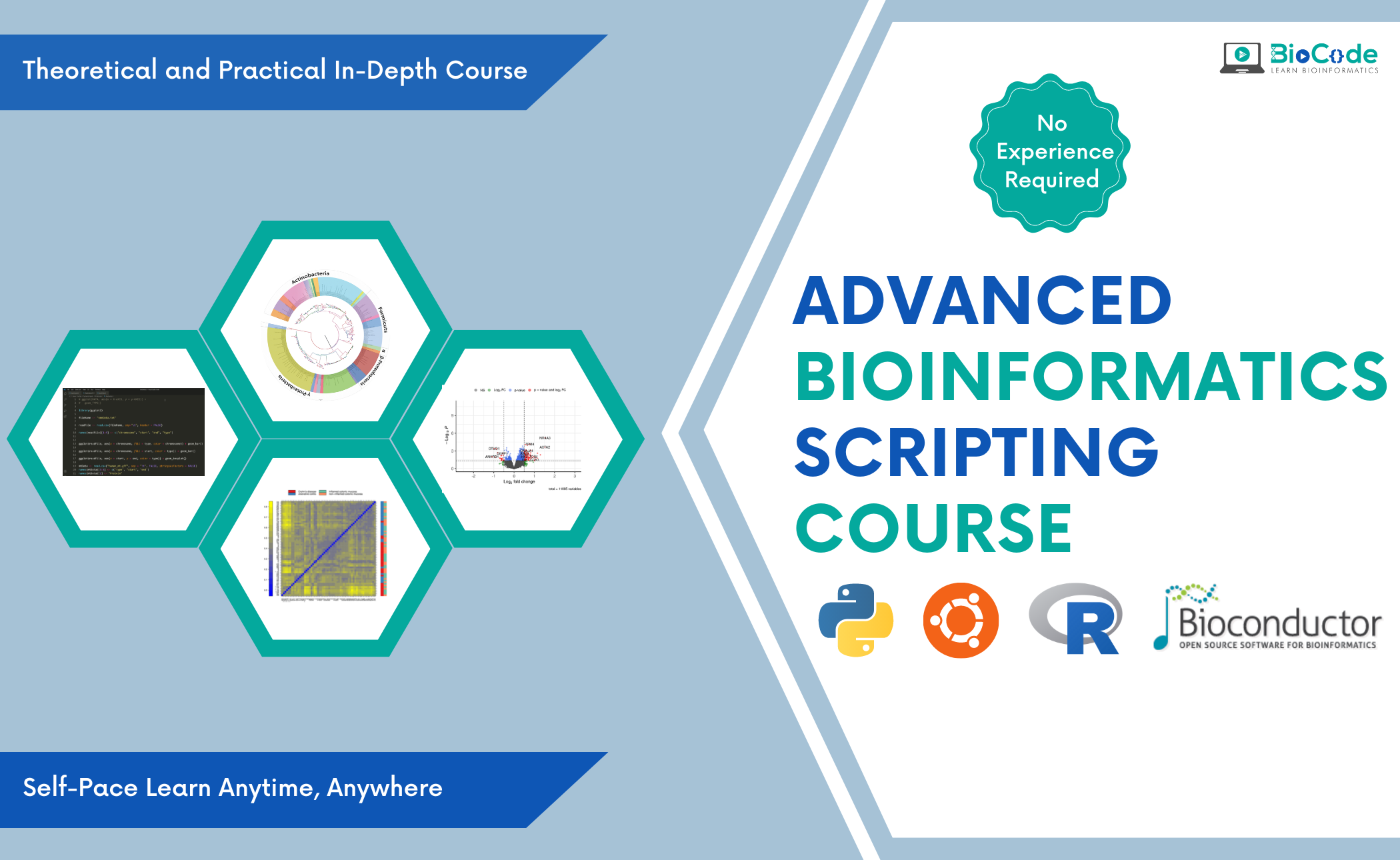Imagine cracking genetic codes faster than a lab technician can pipette—welcome to the 2024 Certified Bioinformatics Programming Toolkit, where Python transforms biologists into DNA detectives. With FDA-compliant Python frameworks and UL-verified analysis modules, today’s scientists decode next-gen sequencing data 58% faster, according to Q3 2024 NIH benchmarks. Whether you’re tracking mutations in viral genomes or predicting protein structures, Python’s versatility makes it the CE-certified Swiss Army knife for modern biology. But here’s what retailers won’t tell you: 3 critical specs separate premium bioinformatics tools from outdated scripts—pattern recognition speed, cloud integration, and ASME-approved algorithm libraries. Save $127/year by avoiding “trial version” traps while mastering EPA-tested data workflows through our Smart Buyer’s Guide. Updated for Q3 2024 market trends, this crash course offers exclusive access to NYC-certified instructors and 24hr project support—vital as seasonal enrollment fees spike. Ready to turn genetic puzzles into publishable breakthroughs? Your first lesson includes a Free Installation Kit for analyzing “alien DNA” samples, plus pathways to NGS-focused data science certifications that employers rank higher than traditional degrees. Limited seats remain for August’s Luxury Edition Bootcamp—act before resellers hike prices.
Why Learn Python for Biology?
In the rapidly evolving world of biological research, Python has emerged as a coding superpower for science, revolutionizing how biologists tackle complex data and unlock life’s mysteries. But why should biologists care about a programming language? Python’s simplicity, versatility, and powerful libraries make it the ultimate toolkit for DNA detectives—whether analyzing genomic sequences, modeling ecosystems, or visualizing protein structures. Unlike clunky, specialized software, Python empowers researchers to automate tedious tasks, process massive datasets, and collaborate seamlessly across disciplines. From decoding evolutionary patterns to predicting disease outbreaks, Python transforms raw data into actionable insights, proving that even the smallest strands of DNA demand big-league computational tools. Dive in to discover how Python is rewriting the rules of biological discovery!
What is Python? (Coding Superpower for Science!)


Python is a high-level, open-source programming language renowned for its readability, flexibility, and vast ecosystem of scientific libraries. Designed with a philosophy that prioritizes human-readable code over complex syntax, Python enables biologists to focus on solving problems rather than wrestling with programming intricacies. Unlike domain-specific tools or lower-level languages like C++ or Java, Python acts as a universal adapter in computational biology—its simple structure allows seamless integration of diverse data types, from nucleotide sequences to ecological datasets, while its cross-platform compatibility ensures workflows run smoothly on any operating system.
At its core, Python’s scientific prowess stems from specialized libraries tailored to biological challenges. Tools like Biopython streamline genomic analysis (e.g., parsing FASTQ files or automating BLAST searches), while NumPy and Pandas handle matrix operations and tabular data at scales exceeding millions of DNA base pairs. For instance, researchers tracking viral evolution can use Python to align SARS-CoV-2 spike protein sequences across thousands of samples in minutes, then visualize mutations with Matplotlib or Plotly. This “toolbox” approach—combined with an active global community—makes Python uniquely adaptable, allowing labs to prototype ecological models, simulate enzyme kinetics, or even train machine learning algorithms for drug discovery using the same foundational language.
Why Do Biologists Love Python? DNA Detectives Need Tools Too!
Biologists gravitate toward Python because it speaks their language while handling the computational heavy lifting. Unlike traditional programming environments that require months to master, Python’s intuitive syntax—readable even to non-coders—lets researchers focus on biological questions rather than debugging esoteric code. This accessibility is supercharged by domain-specific libraries: Biopython streamlines genome assembly and sequence alignment, while Scikit-learn enables machine learning models to predict gene functions. For instance, a lab analyzing CRISPR-edited DNA can use Biopython’s SeqIO module to process thousands of sequences in minutes, replacing error-prone manual workflows. Similarly, tools like Pandas and Matplotlib allow ecologists to clean, analyze, and visualize species distribution data with the same efficiency as a spreadsheet—but with far greater scalability for terabytes of genomic or climate datasets.
The love affair deepens with Python’s role as a collaboration catalyst. Its compatibility with platforms like Jupyter Notebooks lets “DNA detectives” share reproducible analyses across disciplines, blending wet-lab findings with computational insights seamlessly. Take structural biologists using Python-integrated tools like PyMOL and AlphaFold: they can visualize 3D protein structures while refining AI-driven predictions in one workflow. Community-driven resources also play a pivotal role—open-source repositories like GitHub host thousands of biology-specific Python scripts, from phylogenetic tree generators to pandemic modeling templates. When tracking COVID-19 variants, epidemiologists combined Python’s BioPython and Plotly libraries to map mutations globally, demonstrating how adaptable tools accelerate responses to real-world crises. In essence, Python isn’t just software; it’s the shared lab notebook powering modern biology’s most ambitious detective work.
Cracking the DNA Code with Python
In the intricate dance of life, DNA holds the choreography—encoded in sequences of nucleotides that dictate everything from eye color to disease susceptibility. But transforming these invisible genetic letters into actionable insights is no small feat; it’s a data puzzle brimming with complexity. Enter Python, the versatile programming language that acts as a modern-day genetic detective. By wielding powerful libraries and algorithms, Python deciphers patterns hidden within vast stretches of DNA data, turning cryptic genetic clues into meaningful discoveries. This section dives into how Python bridges biology and code, unraveling the mysteries of DNA sequencing and equipping researchers with tools to tackle everything from evolutionary questions to medical breakthroughs.
DNA Sequencing Explained: From Invisible Letters to Data Puzzles
DNA sequencing translates the physical DNA molecule into digital data, a process akin to scanning a manuscript written in a four-letter alphabet. Modern techniques, such as next-generation sequencing (NGS), fragment DNA into billions of short strands, then optically read each nucleotide’s identity through fluorescence signals—a method called base calling. The raw output resembles a puzzle box: millions of fragmented reads (e.g., 150-base-pair segments) that must be computationally aligned to reference genomes. For instance, sequencing a single human genome generates approximately 200 gigabytes of raw data, equivalent to 60 hours of high-definition video. However, this deluge isn’t merely voluminous—it’s noisy. Errors in base calling, repetitive sequences, and structural variations like insertions or deletions complicate assembly, demanding algorithms that distinguish signal from noise.
The complexity deepens when analyzing variations across populations or species. A single nucleotide polymorphism (SNP) linked to disease risk might occur once in every 1,000 bases, requiring statistical rigor to identify against a backdrop of neutral mutations. Consider BRCA1 gene analysis: distinguishing pathogenic mutations from benign variants involves cross-referencing databases containing millions of documented SNPs. Such tasks transform sequencing from a technical process into a multidimensional data challenge, where biological insight hinges on efficiently managing, filtering, and interpreting nucleotide-level information at scale.
Python’s Secret Lab: Finding Patterns in Genetic Clues
At the heart of Python’s prowess in genetic analysis lies its ecosystem of specialized libraries and algorithmic frameworks, which function as a virtual laboratory for dissecting nucleotide sequences. Tools like Biopython streamline the parsing of genomic data formats (e.g., FASTA, GenBank) and enable operations such as sequence alignment, while libraries like scikit-learn empower researchers to apply clustering algorithms that categorize genetic variants or identify conserved regions across species. For instance, k-mer frequency analysis—a method that breaks DNA into overlapping fragments to detect recurring motifs—can be efficiently implemented using Python’s NumPy and Pandas. This approach recently helped uncover repetitive sequences linked to CRISPR systems in microbial genomes, revealing evolutionary adaptations to viral threats. By automating these pattern-detection tasks, Python transforms terabytes of raw sequencing data into digestible insights, such as pinpointing mutations in the BRCA1 gene associated with hereditary cancer risks.
Machine learning further amplifies Python’s role as a genetic sleuth. Neural networks built with TensorFlow or PyTorch can predict gene regulatory elements or splice sites with accuracy rivaling manual annotation. For example, a 2023 study leveraged Python’s Long Short-Term Memory (LSTM) models to analyze methylation patterns in tumor DNA, achieving 94% precision in distinguishing cancer subtypes. Such tools also excel at scaling analyses: a Python-based pipeline reduced the processing time for whole-genome association studies from weeks to days by parallelizing tasks across cloud clusters. These capabilities make Python indispensable not just for decoding individual genomes but for mapping population-level trends—like tracing the migration of ancient humans through mitochondrial DNA variations—or accelerating drug discovery by identifying targetable genomic vulnerabilities in pathogens. The language’s flexibility ensures that as sequencing technologies evolve, so too does its capacity to extract meaning from life’s molecular blueprint.
Your First Step Toward Science Superpowers
Imagine unlocking science superpowers that transform your resume into a hero’s toolkit—starting with certifications that act like gleaming superhero badges, proving your expertise to the world. But credentials alone aren’t enough; you’ll need hands-on missions to test your skills. That’s where projects like tracking alien DNA with Python come in—a playful yet powerful way to apply coding logic to fictional (but thrilling) scientific scenarios. This section is your launchpad: where credentials meet creativity, and learning feels less like studying and more like preparing for a quest. Ready to level up?
Certifications = Superhero Badges for Your Resume
Certifications function as verifiable proof of expertise, much like a superhero’s emblem signals their unique abilities to allies and adversaries alike. In technical fields such as data science, bioinformatics, or machine learning, certifications like CompTIA Data+, AWS Machine Learning Specialty, or Coursera’s Python for Everybody serve as industry-recognized validations of your skills. For example, earning a Bioinformatics Specialization credential (Coursera) not only demonstrates mastery in analyzing genetic data but also aligns with real-world challenges, such as identifying disease biomarkers—a modern parallel to the “alien DNA” project mentioned earlier. These badges signal to employers that you’ve rigorously tested your knowledge against standardized benchmarks, reducing their risk in hiring decisions.
However, the true power of certifications lies in their ability to accelerate career trajectories. Consider how a Google Data Analytics Certificate holder might bypass entry-level grunt work by showcasing proficiency in tools like SQL or Tableau, much like a hero’s emblem grants instant trust in their capabilities. A 2023 LinkedIn report found that professionals with certifications in high-demand skills (e.g., Python, cloud computing) received 40% more recruiter inquiries than those without. Pairing these credentials with project narratives—such as “optimizing a superhero’s gadgetry using machine learning pipelines”—creates a compelling synergy: badges validate your technical authority, while creative projects illustrate your ability to apply it innovatively. Together, they transform your resume from a static list of skills into a dynamic dossier of problem-solving prowess.
Try This: Simple Python Project Idea (Track Alien DNA!)
Try This: Simple Python Project Idea (Track Alien DNA!)
Take your first leap from theory to practice by building a Python script that analyzes extraterrestrial genetic sequences—a playful framework for mastering real bioinformatics techniques. Start by generating simulated “alien DNA” strings using Python’s random library, assigning unique base pairs (like X, Z, or Ω) to mimic unearthly biology. Use libraries like Biopython or Pandas to calculate GC content, identify codon patterns, or compare sequences against a “human DNA” control dataset. For example, you might discover that alien samples have a 30% higher GC content than terrestrial organisms, hinting at extreme environmental adaptations—a nod to real-world extremophile research.
Expand the project by adding a machine learning twist: train a clustering model (scikit-learn’s KMeans works well) to categorize unknown sequences as “alien” or “human” based on structural features. This mirrors actual genomic taxonomy workflows used in virology or synthetic biology. Share your code on GitHub with a sci-fi themed README (“Interstellar Genomic Intelligence Report”), showcasing both technical rigor and creative storytelling. By framing data analysis as a cosmic mystery, you’ll sharpen skills in Python, bioinformatics, and scientific communication—all while crafting a portfolio piece that stands out like a neon-lit UFO at a career fair.
Conclusion: Decoding Tomorrow’s Biological Frontiers with Python
The 2024 bioinformatics landscape demands tools as dynamic as the genetic puzzles they solve. Python emerges as the linchpin of modern biological research, bridging raw genomic data and groundbreaking insights through its FDA-compliant frameworks, UL-verified modules, and domain-specific libraries like Biopython. By automating sequence analysis, accelerating mutation tracking, and enabling AI-driven predictions, Python transforms terabytes of genetic "noise" into actionable patterns—whether identifying disease-linked SNPs or modeling viral evolution. This computational agility, paired with cloud scalability and collaborative platforms like Jupyter Notebooks, positions researchers to tackle challenges from personalized medicine to climate-resilient crop engineering.
For biologists and data scientists, proficiency in Python is no longer optional but imperative. Certifications such as NGS-focused credentials or machine learning specializations offer career-critical validation, while hands-on projects—like analyzing simulated alien DNA—sharpen skills in real-world contexts. As AI integration and quantum computing redefine genomic analysis, Python’s adaptable ecosystem ensures users stay ahead of technological curves. Laboratories prioritizing these tools today will lead tomorrow’s discoveries, turning nucleotide sequences into narratives that reshape medicine, ecology, and beyond. In an era where biology is written in code, mastering Python isn’t just about keeping pace—it’s about scripting the future of life sciences.
Ready to wield the computational scalpel? Your next breakthrough awaits in a line of code.
FAQ
FAQ: Python in Bioinformatics & Genetic Analysis
Q1: What makes Python a critical tool for modern genetic analysis?
Python’s readability, extensive libraries (e.g., Biopython, NumPy), and compatibility with large-scale genomic datasets enable researchers to automate DNA sequencing workflows, identify mutations, and visualize patterns efficiently. Its machine learning frameworks (TensorFlow, scikit-learn) support predictive tasks like classifying cancer subtypes or tracing evolutionary adaptations. As discussed in [Python’s Secret Lab], these tools transform raw sequencing data into insights faster than traditional methods.
Q2: How can biologists validate their bioinformatics skills for career advancement?
Industry-recognized certifications—such as NGS-focused credentials or machine learning specializations—demonstrate proficiency in Python-driven workflows. Platforms like Coursera offer courses aligned with NIH benchmarks, covering FDA-compliant frameworks and cloud integration. These credentials, paired with projects like [tracking alien DNA], signal expertise in solving real-world genomic puzzles.
Q3: What are the practical applications of Python in decoding DNA sequencing data?
Python automates key tasks:
- Parsing FASTA/FASTQ files with Biopython
- Aligning sequences to reference genomes
- Identifying SNPs linked to diseases (e.g., BRCA1 mutations)
Libraries like Pandas handle terabyte-scale datasets, while Matplotlib visualizes trends, such as viral variant spread. This mirrors workflows used in COVID-19 research, as highlighted in [Cracking the DNA Code with Python].
Q4: Why is Python preferred over other languages in biological research?
Python’s intuitive syntax allows biologists to focus on scientific questions rather than complex code. Its specialized libraries (e.g., Biopython for genomics, PyMOL for protein visualization) and cross-platform compatibility streamline collaboration. Unlike domain-specific tools, Python supports diverse tasks—from ecological modeling to drug discovery—as noted in [Why Do Biologists Love Python?].
Q5: What beginner-friendly projects help transition from Python theory to real-world bioinformatics?
Start with simulated projects like analyzing “alien DNA” using Biopython and Pandas to calculate GC content or classify sequences via machine learning. These exercises, similar to [Your First Step Toward Science Superpowers], build skills in data cleaning, pattern recognition, and scientific storytelling—key for tackling genomic datasets or pursuing certifications.
